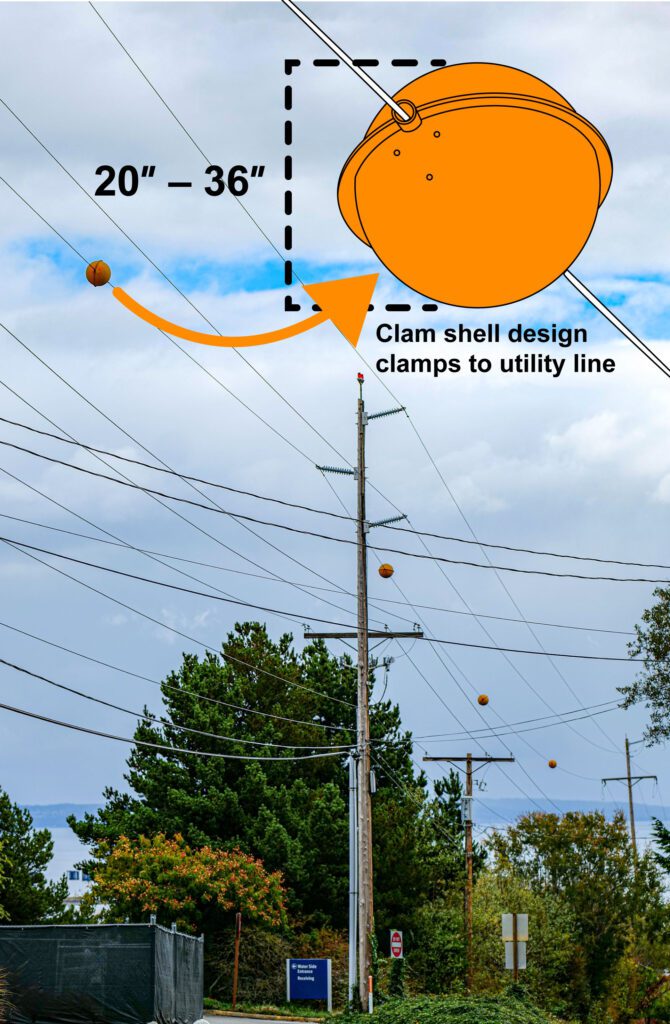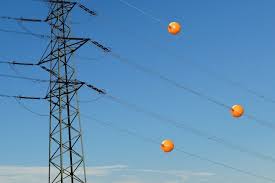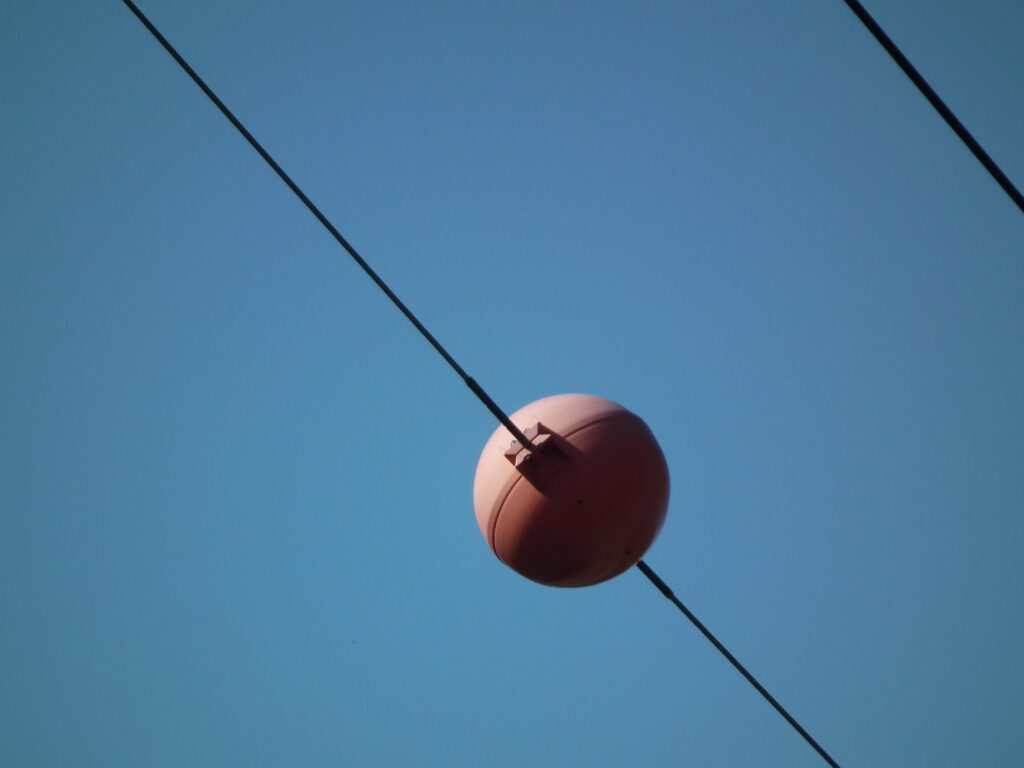Have you ever looked up at power lines and wondered about those colorful balls hanging from them? These spheres, often orange, white, or yellow, are more than just decorations—they play a crucial role in safety. Known as aerial marker balls or visibility markers, they help prevent accidents by making power lines visible to aircraft and birds. In this article, we’ll explore what these balls are, their purpose, design, standards, and the latest developments as of 2025.
Article Content
What Are the Balls on Power Lines?

The balls on power lines are spherical markers designed to enhance visibility. They are typically made from durable materials like ABS plastic or fiberglass, weighing around 17 pounds each. These markers are placed on overhead power lines, especially in areas where wires might blend into the background, such as near airports, over rivers, or in mountainous terrain. While commonly called “balls on power lines,” their technical name is aerial marker balls, and they serve as a visual warning system.
In 2025, advancements in materials have made them more resistant to heat, corrosion, and environmental wear, ensuring longer lifespans and better performance in extreme conditions.
The Purpose of Aerial Marker Balls
The primary function of these balls is to protect low-flying aircraft, including airplanes, helicopters, and even drones, from colliding with power lines. Power lines can be nearly invisible against certain landscapes, like dense forests or gray skies, so the bright colors make them stand out. They are especially common near airports, heliports, deep valleys, mountain passes, and water crossings where aircraft operate at lower altitudes.
Additionally, these markers help birds avoid striking the lines, reducing wildlife incidents. Some designs also minimize wire vibrations caused by wind, known as galloping, which can damage infrastructure. In essence, aerial marker balls save lives, protect equipment, and preserve the environment.
Design and Features of Power Line Balls

Aerial marker balls come in various sizes, typically ranging from 20 to 36 inches in diameter, with smaller 12-inch options for low-risk areas. The most common color is international aviation orange for maximum visibility, but white and yellow are used, often alternating along the line for better contrast. In 2025, some models feature LED lights powered by the electrical field of the line itself, providing nighttime visibility without external power sources.
Modern designs include clam-shell clamping systems that allow installation on live wires, often via helicopter, without de-energizing the line. Eco-friendly options are gaining popularity, with sustainable materials that reduce environmental impact while maintaining high safety standards. Sizes vary too—300mm and 600mm are standard, with custom colors available for bulk orders.
Standards and Regulations for Aerial Markers
Standards for aerial marker balls are governed by organizations like the Federal Aviation Administration (FAA) in the US and the International Civil Aviation Organization (ICAO) globally. According to FAA guidelines (AC 70/7460-1L), markers must be visible from at least 4,000 feet in clear conditions and spaced no more than 200 feet apart, with tighter spacing (30-50 feet) near runways.
Colors should alternate between aviation orange, white, and yellow for optimal conspicuity. For high-voltage lines (up to 345 kV), special coatings prevent corona effects that could damage the markers. As of 2025, there have been no major regulatory changes, but emphasis on proactive installation in hard-to-see areas continues, as seen in updates from utilities like Southern California Edison.
| Aspect | FAA Standards | ICAO Standards |
|---|---|---|
| Size | 20-36 inches; 12 inches in limited cases | Minimum 600mm (≈24 inches) |
| Color | Alternating orange, white, yellow | Solid or alternating orange, white, yellow |
| Spacing | Up to 200 ft; 30-50 ft near runways | 30-50 m in high-risk zones |
| Visibility | From 4,000 ft | Daytime emphasis |
Latest Updates on Power Line Markers in 2025
In 2025, innovations focus on efficiency and sustainability. New models like the Sphera aerial marker balls reduce installation time by 70% with simplified designs, improving worker safety and cutting costs. Heat-resistant and corrosion-protected markers are highlighted for high-efficiency transmission lines. Recent articles and videos emphasize their role in preventing incidents with news helicopters and small planes.
Utilities are expanding use in areas with increasing drone traffic, and eco-conscious manufacturing is becoming standard. No significant OSHA updates affect markers directly as of October 2025, but general power line safety remains a priority.
Installation and Maintenance of Visibility Markers

Installation often involves helicopters for hot lines (energized wires), using preformed spiral wires or universal clamps for secure attachment. Markers are placed on the highest wire or alternated across multiple wires to balance weight. Maintenance includes regular inspections to replace faded or damaged balls, ensuring ongoing visibility.
With advancements, some markers now feature superior color retention and are adaptable to various line types, including OPGW and static lines.
Conclusion: Why Aerial Marker Balls Matter
The balls on power lines are essential safety features that protect aviation, wildlife, and infrastructure. As technology evolves in 2025, these markers continue to improve in design and efficiency. Next time you spot one, remember—it’s a simple yet vital tool keeping the skies safer. For more insights into electrical safety, stay informed about ongoing developments in utility practices.
